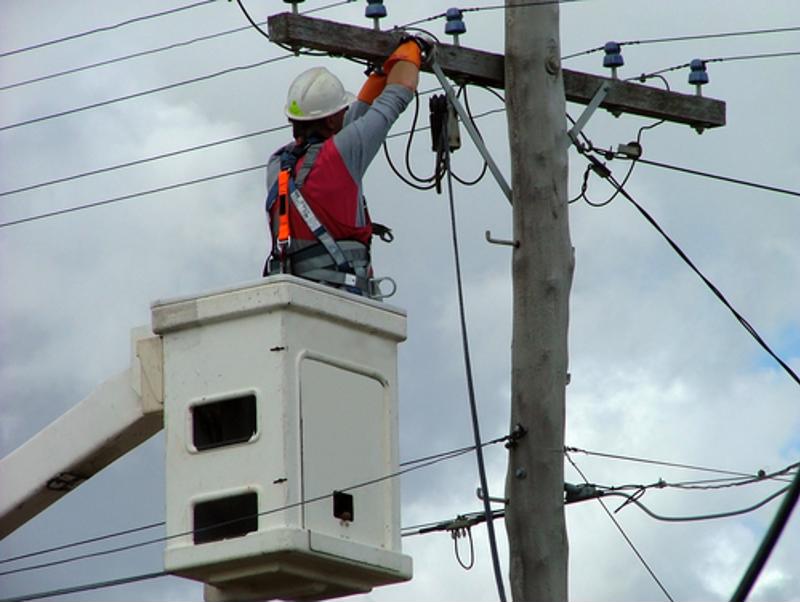
Utility pole drama highlights need to eliminate FTTH barriers
By Max BurkhalterSeptember 30, 2016
Implementing a fiber-to-the-home network is a complex, expensive and time-consuming process. This creates an operational climate in which telecoms and dedicated internet service providers must take an incredibly cautious approach to network innovation because the complicated installation process combines with uncertain consumer buy-in to create a difficult value proposition. When these factors add up, organizations considering an FTTH deployment face a tricky risk-reward scenario in which failing to install FTTH can leave them behind competitors, but moving forward also creates risk.
Some of this risk is being mitigated by technologies, tools and strategies that simplify and accelerate FTTH deployment. Fiber-to-Ethernet media converters make it much easier for telecoms and ISPs to interconnect FTTH infrastructure with copper-based Ethernet networks at home. Options like micro-trenching and bend-resistant fiber simplify installation in urban areas. However, utility poles still represent a major roadblock to efficient FTTH installation, and a recent report from Wired highlights legal drama taking place in Nashville, Tennessee, that puts the issue under the spotlight.
"Network deployment risk is being mitigated by strategies that accelerate FTTH deployment."
Utility poles and fiber - Nothing is simple
Google has been working on its gigabit fiber project for years, with Nashville among recent destinations for the service. Google had disrupted a few traditional operating models through this process, with a new law in Louisville, Kentucky, getting a great deal of attention. According to Wired, Louisville established a "one touch make ready" law to support faster and more efficient FTTH deployment. Utility poles are at the center here, as making space for new fiber lines is an incredibly complex process. A normal workflow for new cable deployment on a utility line includes the following:
- The company that needs to run out a new cable gets formal approval and notifies everybody else with a wire on utility poles that will be used.
- With that notification in place, each company that owns a wire on that pole will need to send a worker out and manually move the wire to make space for the new installation.
- The new cable can be deployed now that there is space on the line.
The one touch make ready law would allow whichever entity that owns a utility pole involved in a project to hire a single contractor and have that organization move all of the cables at once. Louisville's efforts to pass this law is aimed at accelerating innovation, but AT&T is appealing that decision at the same time as Nashville is considering the option. Nashville has approved the one touch make ready law since the time of the Wired report, and the Tennessean explained that AT&T is likely to submit a lawsuit against the city as it has in Louisville.
The legal issues surrounding the one touch make ready decisions are complicated, with AT&T calling them illegal, but major industry organizations such as the Fiber to the Home Council and Next Generation Cities stating the new regulations will benefit everyone - making deployment cheaper and providing reliability benefits that extend to consumers.
Having these laws sets some precedent that cities are trying to eliminate barriers to network innovation, setting the scene for potential innovation when it comes to FTTH deployment. These advances come as 2015 was among the top years in recent history for FTTH growth.

Work on utility poles doesn't have to be a barrier to FTTH adoption.
FTTH gaining momentum
A recent survey from RVA, LLC and published by the FTTH Council Americas found that 2015 was the second-biggest year for expansion within the sector since the advent of the technology, Michael Render, president for RVA, LLC, explained. Render said the sector is set for rapid growth for the next five years.
All told, the study found that:
- Approximately 26 million U.S. homes have been passed with fiber.
- Three million new homes gained access to fiber in 2015 - a 13 percent increase in fiber deployments.
- Gigabit fiber is rising as more than half of service providers are expected to offer the solution within five years.
- Consumers are 50 percent happier with fiber than they are with DSL.
- Speed and reliability are driving this satisfaction.
- Canada, the U.S., Mexico and the Caribbean are all making FTTH inroads, making North America a hotbed for FTTH innovation.
Heather Burnett Gold, president of the FTTH Council, said the U.S. is among the world's leaders when it comes to FTTH adoption.
"Fiber's on fire in the U.S.," said Gold. "Now, nearly one fifth of the world's fiber connections are here in the United States. Offering faster speeds and better reliability, fiber sells itself."
Keeping up with demand for fiber
Telecoms and ISPs have an opportunity to take advantage of the growing momentum around FTTH adoption to get a foothold in the marketplace and create revenue opportunities. Technologies such as media converters that simplify deployment are combining with legal and regulatory changes to accelerate FTTH installation and make it easier for organizations to monetize their network projects.
Perle has an extensive range of Managed and Unmanaged Fiber Media Converters to extend copper-based Ethernet equipment over a fiber optic link, multimode to multimode and multimode to single mode fiber up to 160km.



